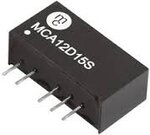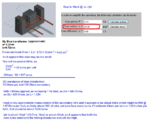Jester
Full Member level 6
Ratio 1:1
12Vrms
0.2VA
60Hz
Is this something I could wind myself in an hour?
What core should I use and roughly how many turns would be required.
I searched for a transformer like this but did not find anything. Perhaps I'm not searching in the right place?
12Vrms
0.2VA
60Hz
Is this something I could wind myself in an hour?
What core should I use and roughly how many turns would be required.
I searched for a transformer like this but did not find anything. Perhaps I'm not searching in the right place?


